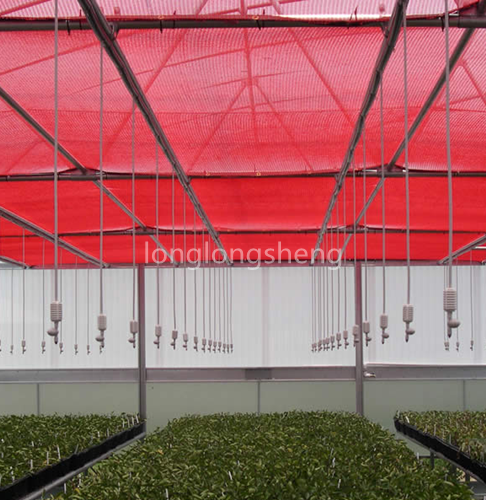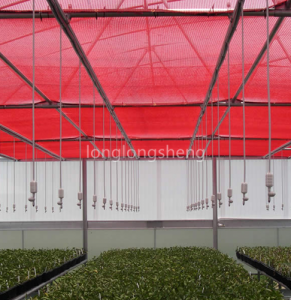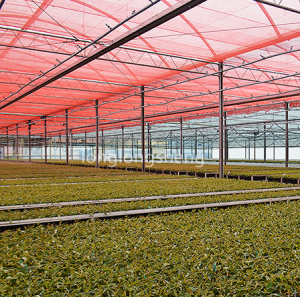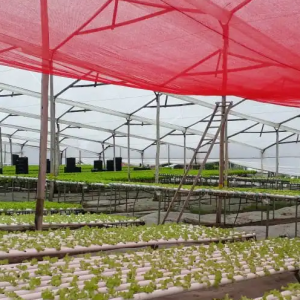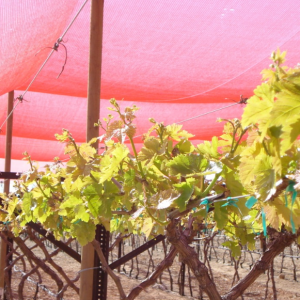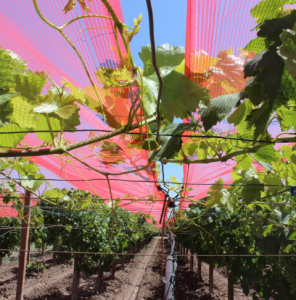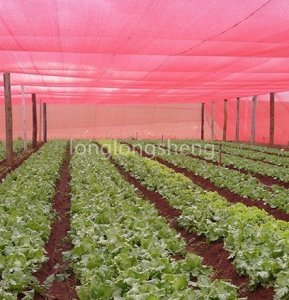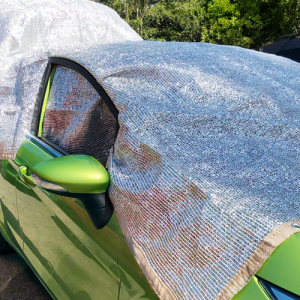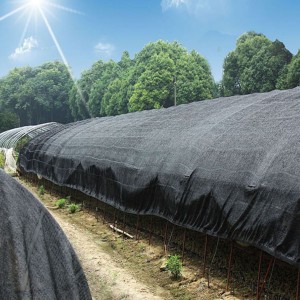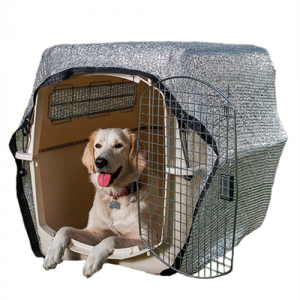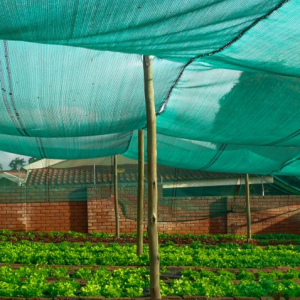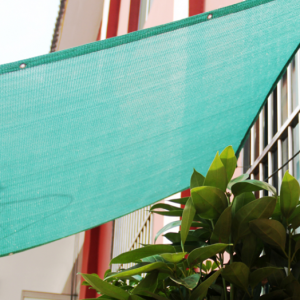Red Shade Net Crop Protection Net
The role of the sunshade net:
(1) Shading, cooling and moisturizing At present, the shading rate of shade nets produced in my country is 25% to 75%. Shade nets of different colors have different light transmittances. For example, the light transmittance of black shading nets is significantly lower than that of silver-gray shading nets.
Because the shading net reduces the light intensity and the radiant heat of the light, it has an obvious cooling effect, and the higher the outside temperature, the more obvious the cooling effect. When the outside air temperature reaches 35-38°C, the general cooling range can reach 9-13°C, and the maximum drop can be 19.9°C. The most obvious cooling effect is on the surface, followed by the range of 20 cm above and below the ground, and the range of 5 cm above and below the leaves of the plant. Covering the sunshade net in hot summer, the surface temperature can be lowered by 4-6°C, the maximum can reach 19.9°C, the temperature of 30 cm above the ground can be lowered by 1°C, and the temperature of 5 cm underground can be lowered by 3-5°C; if the surface is covered, the temperature of 5 cm underground can be lowered Decrease by 6 to 10°C.
After the shading net is covered, the solar radiation decreases, the ground temperature drops, the wind speed weakens, and the evaporation of soil moisture is reduced. Generally, the evaporation is only 30% to 40% of the open field, which has obvious functions of drought prevention and moisturizing.
(2) Wind-proof, rain-proof, disease-proof and insect-proof The shading net has high mechanical strength, which can slow down the loss of vegetables caused by typhoon, rainstorm, hail and other disastrous weather.
The greenhouse is covered by a shading net. During a typhoon, the wind speed inside the shed is only about 40% of the wind speed outside the shed, and the wind blocking effect is obvious.
3. Selection of sunshade net material
1. Shading rate: The selection of shade net shading rate must fully consider the following aspects: greenhouse type, greenhouse covering material, local climatic conditions, and greenhouse crop varieties. Especially the light requirements of crop varieties, the light compensation point and light saturation point of photosynthesis of different crops are different in each growth stage. After fully considering many factors, the most suitable light intensity for the crop should be comprehensively compared and the most economical one should be selected. , Reasonable shade net.
The types and functions of shading nets in greenhouses are convenient for your selection of agricultural planting in summer
Cooling effect: Under the conditions of ensuring the light requirements for crop growth, the more solar radiation reflected by the sunshade net, the better the cooling effect. During the cooling process of the inner shading, part of the reflected solar radiation will be absorbed by the shading net itself, resulting in an increase in the temperature of the shading net and heat exchange with the indoor air, thereby increasing the temperature of the greenhouse. Therefore, in order to obtain the best cooling effect for indoor cooling, the selected shading net must have a high reflectivity to solar radiation. In general, the aluminum foil in the aluminum foil mesh has a higher reflectivity to solar radiation, and the cooling effect is much higher than that of other types of meshes. The cooling effect of the external sunshade can ignore the part of the energy absorbed by the sunshade net itself, so the cooling effect of the outdoor sunshade is generally determined by the shading rate.






